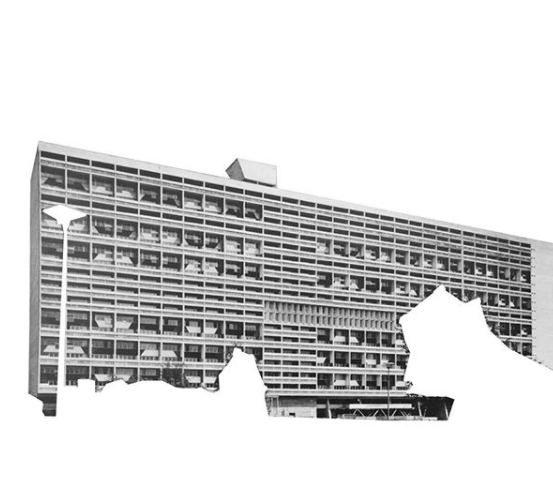

Conversation with artist Christian Chironi
Text: Margherita FalquiMy House is a Le Corbusier: the itinerant performance of the artist Cristian Chironi continues in the Unité d’Habitation in Berlin
After Italy, France, India and Argentina, Cristian Chironi's My House is a Le Corbusier project moves to Berlin in the Apartment 258, where the artist had the opportunity to live with the owners Henrik and Natalia Svedlund.


The project, started in 2015, consists of inhabiting each of the homes designed by Le Corbusier undertaking an artistic research on the suggestions and emotions experienced inside of them. These buildings become the observatory to understand the current legacy of of the father of Modulor and to investigate the relationship between the home and its inhabitant, between ideal architecture and popular functionality.
An analysis that is carried out by collecting the inputs that are hidden within these constructions, sensations that are then manufactured and re-worked into interdisciplinary creative forms such as installations, videos, photographs, works on paper and performances. During each residence, the apartment is transformed into a factory of ideas and a place for collaborations, where the public can exchange point of views and interact with the artist or simply share the small gestures of everyday life, such as drinking coffee or reading a book.
To accompany Chironi in his transfers is a Fiat 127 special, renamed The Chameleon for the characteristic of matching the color of the building in front of which it stops.
In this interview, Chironi tells us about his last experience and the evolution of his nomadic living, also explaining his intermediate stages, the time and space that separate him from a performance-residence and bring him closer to the next.



How did your interest in Le Corbusier start? How has your birthplace influenced the research that has led you, since 2015, to undertake this long-term project?
The interest in Le Corbusier it is not a choice and it is not an obsession. It all started from a story that Daniele Nivola told me, happened in Orani in the second half of the 1960s: Costantino Nivola, long time friend and collaborator of Le Corbusier, entrusted his brother with a project signed by the great architect, with the hope that he and his children, in the process of building a new house, would have scrupulously followed the original plan. However, the importance of this legacy was not acknowledged. Some time later Costantino, returning from Long Island, noticed that the built house did not correspond at all to the one imagined by Le Corbusier and reacted by taking that project back. The house, which is still in Orani, has been designed preferring a popular feature instead of the modernist idea of the master, who according to the whole family "had neither doors nor windows and looked more like a hovel than a house".
Taking inspiration from this episode, my work identifies the narrative potential of the analysis of a series of relationships in the contemporary with consequent linguistic and socio-political implications, which may vary according to the context. Immersing myself in that impossibility of owning a home during a time of difficult and precarious economic situation, taking the liberty of living in the houses designed by Le Corbusier in the world. By now I'm almost tired of re-telling this anecdote translated today in various languages, even if it still makes me smile. My birthplace has largely influenced the ideation of the project: Daniele Nivola is Costantino's nephew and he is the godfather of my father; Costantino Nivola introduced to Le Corbusier the bricklayer Salvatore Bertocchi who will become one of his trusted artisans; my father and uncles worked with the Bertocchis in Orani... in the end it's all about community, connections, generations, and re-positionings. Before listening to Daniele's story, I never thought of dealing with Le Corbusier, today I use it as a work tool, a material to shape, some new actions to generate.
Tell us about the preliminary study and research that precedes a new phase of your itinerant project. Is it part of your practice? What is your approach?
The most difficult part is to find a way to enter these homes. There is an initial search for relationships and contacts and from there it begins a work of approach, exchange, entrusting bunches of keys. At the beginning there was a phase of study and documentation; This was especially the case Esprit Nouveau in Bologna and the Le Corbusier's Studio-Apartment in Paris. Today I am definitely free to get to the next stage more lightly, as I have internalized the key points of the process and know by heart the cell that is the basis of Le Corbusier's work. However, the approach to these buildings was immediately familiar, as if I had already been there. Perhaps it is because these homes were connected to fellow villagers and still retain their mood.

FIAT 127 Special (Chameleon) version Apt. 258 UH Berlin, 2019; produced by the Anna and Francesco Tampieri Collection © Cristian Chironi

Le Corbusier and his “Modulor” in his office, 35 rue de Sèvres. Paris, France, 1959 © René Burri - Magnum Photos